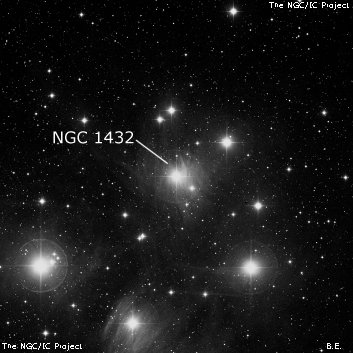Maia Nebula
Maia Nebula

Paul and Prosper Henry (brothers) discovered NGC 1432 on the first plate they took of the Pleiades on 16 Nov 1885 at Paris Observatory using the 33-cm astrograph. The plate showed nebulosity around Maia which they described "appears very clearly and has spiral form...it was impossible to see it in our telescopes." The discovery was announced in AN 2702, though it didn't include an image of the nebula (first published in 1888). This is the only object in the NGC discovered photographically!
Pickering noted on 21 Jan 1886 that he had already photographed the Pleiades on 3 Nov 1885 with an 8-inch lens and stated it only showed "certain irregularities...due merely to defects in the photographic process." However, a comparison revealed that these "irregularities" included a patch west of Maia, pointing to the north, and a diffuse remnant near Merope pointing south. As Pickering interpreted these as plate flaws, the discovery priority remains with Paul and Prosper Henry. The first visual observation was made by Otto Struve on 5 Feb 1886 with the new 30-inch refractor at Pulkovo. On 23 Feb 1886 he made another observation and sketch with the nebula stretching from Maia to the east. E.E. Barnard also observed it visually in 1890.
200/250mm - 8" (12/28/16): at 124x (unfiltered): although all the bright stars in the Pleiades had scattered light halos, it appeared mag 3.9 Maia had a slightly more extensive halo and irregular halo than mag 3.7 Electra. So, I am fairly confident this was due to the outer reflection nebulosity surrounding Maia. The scattered light itself seemed about the same intensity around both stars.
Notes by Steve Gottlieb